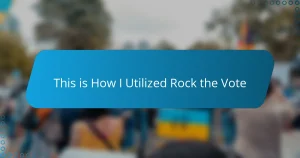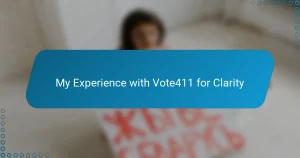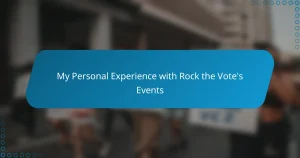Key takeaways
- MoveOn empowers everyday people to engage in political activism, transforming frustration into actionable change.
- Effective political mobilization relies on clear goals, shared purpose, and timely, straightforward communication.
- Organizing local campaigns fosters community connection and is most successful when roles are tailored to individual strengths.
- Measuring impact goes beyond numbers; it includes recognizing emotional engagement and the ripple effects of empowerment among peers.
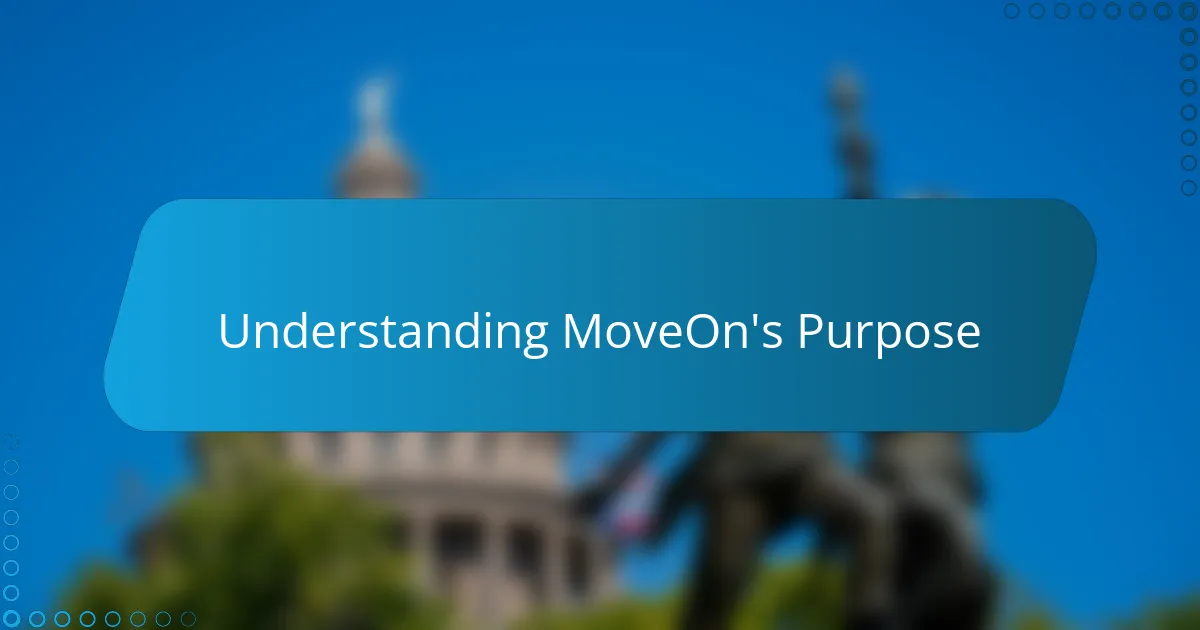
Understanding MoveOn’s Purpose
MoveOn’s purpose struck me the moment I first joined—a grassroots platform designed to empower everyday people to make their voices heard in the political arena. It’s not just about rallies or petitions; it’s about creating a collective force for change by amplifying ordinary citizens’ concerns. Have you ever felt like your opinion didn’t matter? That’s exactly what MoveOn challenges.
What fascinates me is how MoveOn bridges the gap between political disgust and action. Instead of leaving people stuck in frustration, it offers tools to channel that energy into meaningful campaigns. I remember convincing a few friends to join because I saw how sharing a simple petition could spark real conversations and, eventually, real impact.
At its core, MoveOn’s mission is rooted in democratizing political power and energizing civic participation. It doesn’t require you to be a political expert—just someone willing to stand up and say, “This matters.” Isn’t that the kind of movement we all want to be part of?
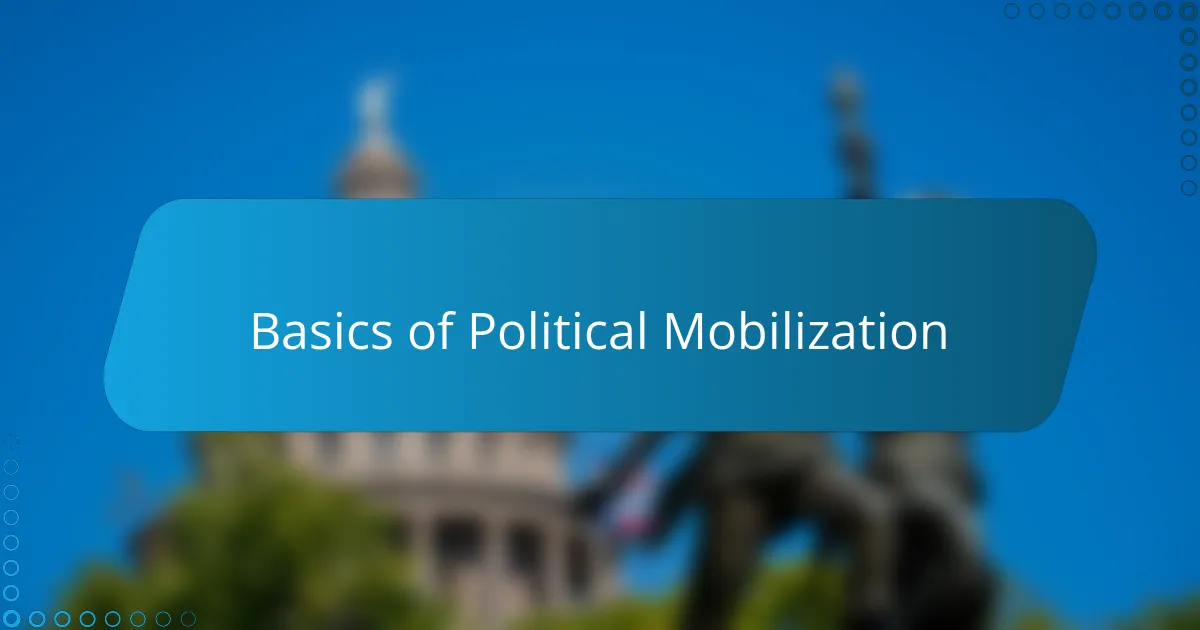
Basics of Political Mobilization
Political mobilization, to me, is about turning awareness into action. It’s one thing to understand an issue, but it’s a whole different game to get people moving—literally and figuratively. I’ve often found that the spark comes from making the political process feel accessible and relevant to my friends’ daily lives.
What makes mobilization work, in my experience, is creating a sense of shared purpose. When people realize they’re part of something bigger, their motivation shifts from “I should” to “We must.” Have you noticed how conversations about politics become more energized when everyone feels their contribution truly counts?
Lastly, timing and simplicity are everything. I once helped organize a call to action that succeeded because we sent clear, straightforward steps at a moment when the issue was top of mind. If you make it too complicated or miss that moment, even the most passionate supporters can lose steam fast. It’s a delicate balance, but when done right, the impact is unmistakable.
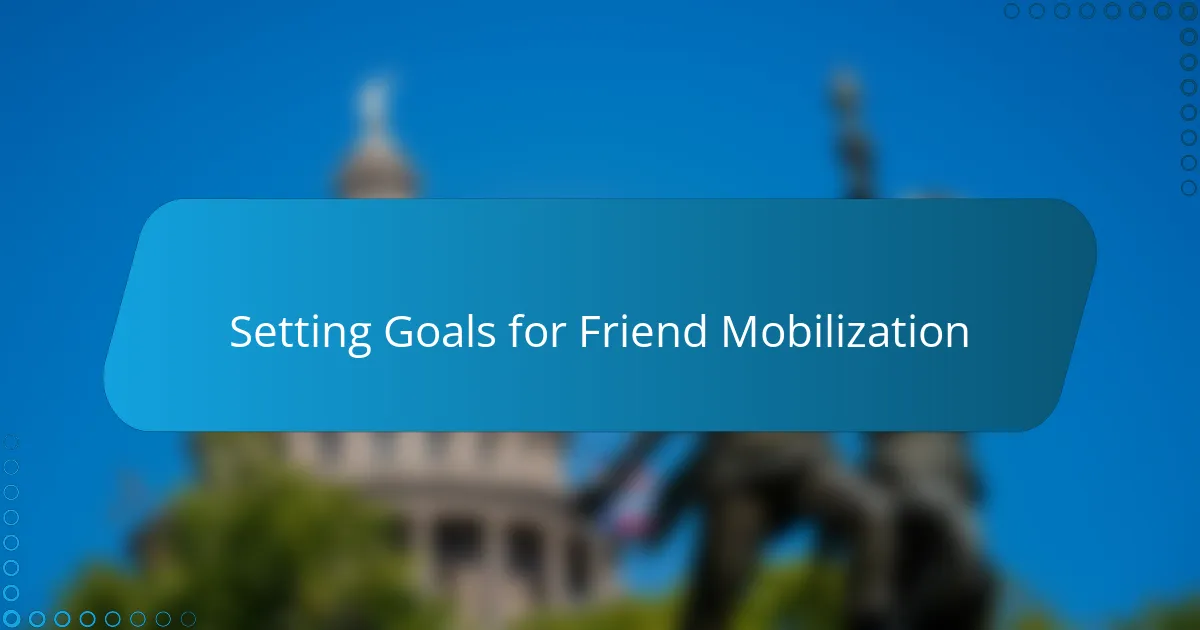
Setting Goals for Friend Mobilization
Setting clear goals was a game-changer in how I approached rallying my friends with MoveOn. I remember asking myself, “What do we want to achieve together?” It wasn’t enough to just get friends involved—I needed specific targets, whether that was signing petitions, attending virtual events, or sharing key messages online.
I found that defining small, achievable milestones kept everyone motivated. When we hit those targets, there was this real sense of progress and teamwork. Have you ever noticed how celebrating even tiny wins can boost morale? That feeling made it easier to push forward and tackle bigger challenges.
Most importantly, I realized goals had to be realistic and tailored to what my friends cared about. If the mission felt too abstract or overwhelming, interest quickly faded. So, I made sure each goal connected to their values and schedules—because without that alignment, mobilization simply stalls.

Effective Communication Strategies
When I think about effective communication, I realize it’s less about speaking and more about listening. I made it a point to understand what truly concerned my friends before sharing MoveOn’s messages. Have you ever noticed how conversations change when you show genuine interest? That openness made my calls to action feel less like demands and more like shared invitations.
Another strategy that worked wonders was keeping messages clear and focused. I avoided overwhelming my friends with too much information at once, instead breaking down complex issues into relatable, bite-sized points. It’s amazing how clarity can cut through skepticism and inspire action—I bet you’ve experienced moments when a simple fact or story made everything click.
I also found that tailoring my approach to each friend’s communication style made a big difference. Some preferred quick texts, others deep email threads, and a few responded best to casual chats over coffee. What surprised me most was how adapting this small detail boosted engagement—it showed that effective communication is just as much about flexibility as it is about content.
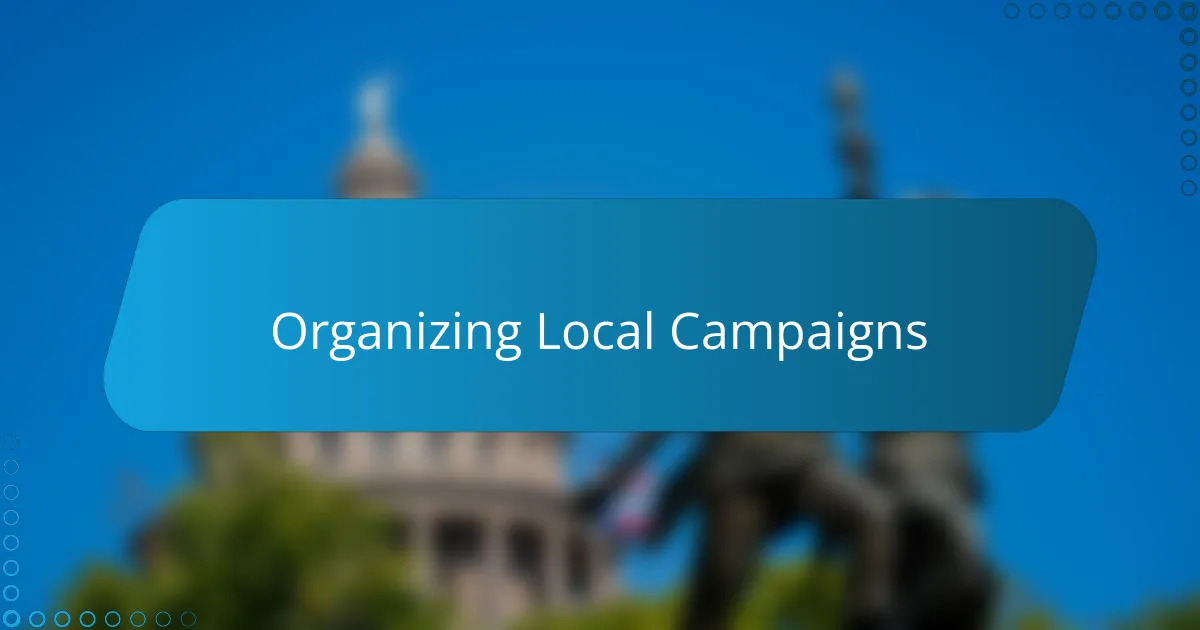
Organizing Local Campaigns
Organizing local campaigns with MoveOn felt like unlocking a hidden superpower in my community. I started by gathering a small group of friends who shared my passion and mapped out neighborhood-specific issues we could tackle together. Have you ever noticed how local efforts make activism feel tangible? When we knocked on doors or hosted potlucks to discuss the campaign, it didn’t just raise awareness—it built a real sense of connection and urgency.
One thing I quickly learned was the importance of dividing roles based on individual strengths. Some friends excelled at social media outreach, while others were natural at face-to-face conversations. This division made the campaign more efficient and kept everyone energized. Isn’t it fascinating how a well-organized team can turn a simple idea into a powerful local movement?
Timing also played a crucial role. We chose moments when the issue was already in local news or people’s minds, which made asking for support feel natural rather than intrusive. From my experience, aligning campaign activities with the local calendar—like community events or council meetings—created momentum that was impossible to ignore. Have you ever been part of something that just seemed to catch fire at the perfect moment? That’s exactly what happened with our MoveOn campaign.
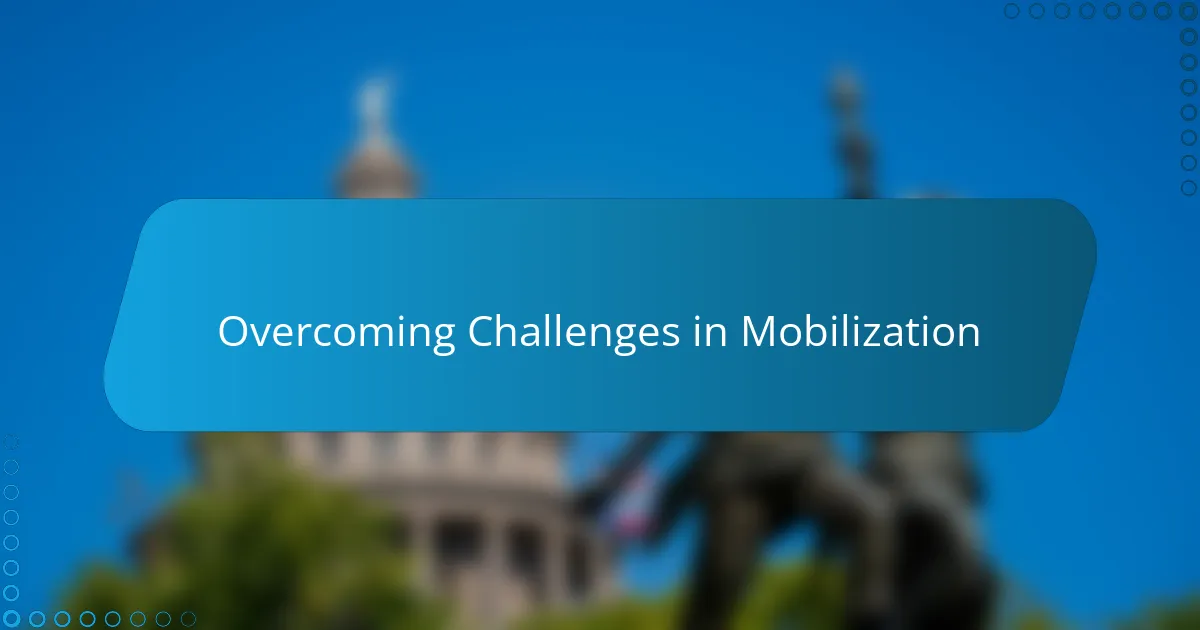
Overcoming Challenges in Mobilization
Challenges in mobilizing friends with MoveOn often came down to overcoming initial skepticism. I remember some close friends doubted whether their small actions could really make a difference. How do you convince someone their voice isn’t just a drop in the ocean? I found that sharing stories of unexpected victories helped break through that barrier.
Another hurdle was dealing with political fatigue—when people feel overwhelmed or hopeless about the state of affairs. It’s tough to keep the momentum when frustration breeds apathy. What worked for me was highlighting quick wins and connecting each step to a bigger change, making the effort feel meaningful rather than draining.
Finally, coordinating diverse schedules and interests sometimes made mobilization feel chaotic. I learned that flexibility is key—offering options for involvement rather than one rigid plan helped friends stay engaged without pressure. Have you noticed how people rally best when they choose how to contribute? That simple respect for their time made all the difference.
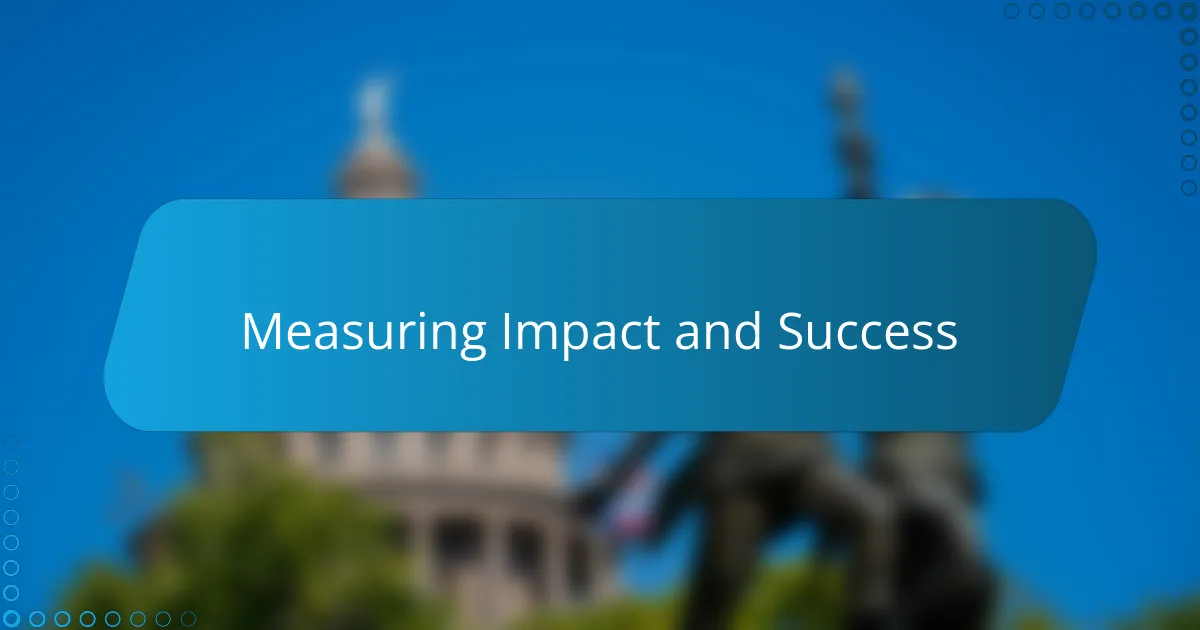
Measuring Impact and Success
Measuring success felt surprisingly personal to me. It wasn’t just about numbers—like how many friends signed a petition or showed up to an event—but about seeing their enthusiasm grow. Have you ever had that moment when someone you convinced actually shares their own passion? That ripple effect, to me, was the real sign we were making a difference.
Tracking progress also gave me a way to stay honest with myself about what worked and what didn’t. I recall feeling a boost every time we hit a milestone, like when a friend posted about our cause on social media or when someone told me they convinced their own circle to join. Those small victories felt like clear markers that our efforts weren’t just talk.
But beyond metrics, measuring impact became an emotional gauge. Did my friends feel empowered? Did they believe their voices mattered more than before? Asking these questions kept me focused and gave meaning to every call, message, or invitation I sent out. After all, success is as much about the journey and connection as it is about the outcome.
